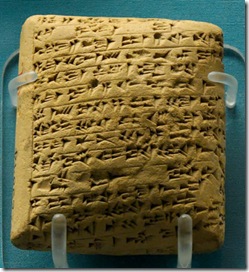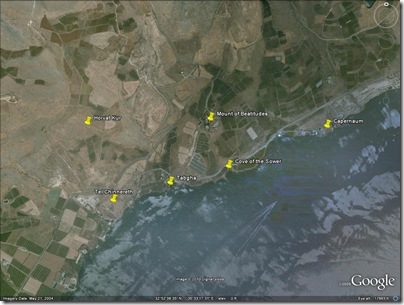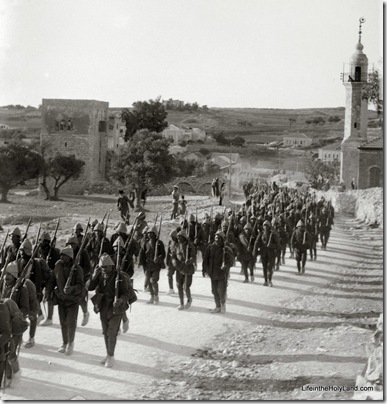The Jerusalem Post reports on the cuneiform tablet noted here yesterday. The story includes a photo.
Hebrew University excavations recently unearthed a clay fragment dating back to the 14th century BCE, said to be the oldest written document ever found in Jerusalem.
The tiny fragment is only 2 cm. by 2.8 cm. in surface area and 1 cm. thick and appears to have once been part of a larger tablet. Researchers say the ancient fragment testifies to Jerusalem’s importance as a major city late in the Bronze Age, long before it was conquered by King David.
The minuscule fragment contains Akkadian words written in ancient cuneiform symbols.
Researchers say that while the symbols appear to be insignificant, containing simply the words “you,” “you were,” “them,” “to do,” and “later,” the high quality of the writing indicates that it was written by a highly skilled scribe. Such a revelation would mean that the piece was likely written for tablets that were part of a royal household.
[…]
According to [Wayne] Horowitz, the high quality of the tablet piece indicates that it was most likely part of a message sent from a then-king of Jerusalem to the pharaoh in Egypt.
Horowitz said that the fragment, which is made of Jerusalem clay, indicated that Jerusalem was one of the central cities of the area at the time.
“This shows Jerusalem was not a provincial backwater, [but] one of the main cities of the area,” he said.
Mazar called the fragment “one of the most important finds we’ve ever had” and said she hoped it would lead to further big discoveries.
“A piece this small wouldn’t have been sitting there all by itself; there have to be more pieces like it,” she said.
The full story is here.
UPDATE (7/12): The AFP has a larger image here. The story is now reported by Arutz-7 and Bloomberg. For more thoughts on the find, see Paleojudaica, Abnormal Interests, and Ferrell Jenkins.
UPDATE #2 (7/12): Joe Lauer sends along links to the Hebrew University press release in English and Hebrew. The university dates the Late Bronze period to the second century B.C., providing new insights into the abilities of the Hasmoneans to correspond in Akkadian (not really; this is obviously a mistake for millennium). One point that the press release makes is that the discovery was made during off-site wet-sifting of the debris. I haven’t seen it in any of the notices, but I believe the fragment was found in early January.
UPDATE #3 (8/8): For a report on the discovery, see here.
The Haaretz article is here. Eilat Mazar, in a red blouse, poses with the fragment and Wayne Horowitz here.


